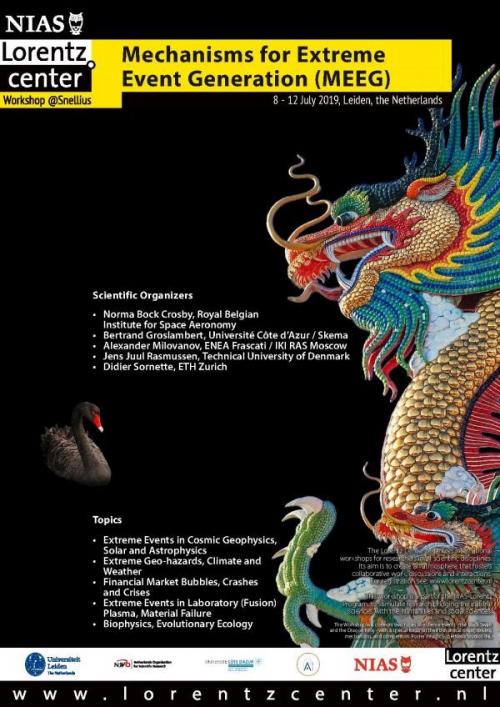Our ability to forecast extreme events
Phenomena in space such as solar flares, coronal mass ejections, energetic particle events, magnetospheric storms and substorms can have undesirable effects on technology and human health. Their counterparts on Earth come in the form of earthquakes, wild fires and volcanic eruptions, among others. Occurring in space or on Earth they all pose important challenges for modern society, especially when it comes to our ability to forecast those events that are potentially the most fatal – the “extreme events”.
The general consensus is that extreme events in complex systems develop universally and jointly with other events. In some cases, however, they have been found to deviate from power law behaviour. To better understand these outliers physicists, scientists, as well as economists are applying extreme risk modelling. Tapping into uncharted waters it is being explored if cross-collaborating among different research communities could be the way forward to help better understand the triggering of extreme events and why they occur.
Extreme risk modelling workshop
To further these efforts, BIRA-IASB co-organized the “Mechanisms for Extreme Event Generation (MEEG)” workshop in Leiden (The Netherlands) in 2019. Consolidating and expanding already existing collaborations in extreme risk modelling, MEEG brought together researchers from the international community with expertise in a wide range of disciplines. The objective was to perform a comparative analysis - identify differences and similarities - of the various phenomena by focussing on the parameters used to describe them, as well as techniques and methods applied.
Initiatives such as MEEG further the understanding of the mechanisms that generate extreme events and as such provide pieces of the puzzle so that society can be better forewarned and prepared when such events ultimately occur.
References:
-
Crosby, N.B. (2011). Frequency distributions: from the sun to the earth. Nonlinear Processes in Geophysics, 18(6), 791-805. https://doi.org/10.5194/npg-18-791-2011

-
Crosby, N.B. (2013). Introduction. In: Self-Organized Criticality Systems, edited by Aschwanden, M.J., pp. 1-21. Berlin, Germany: Open Academic Press.

-
Sornette, D., and Ouillon, G. (2012). Dragon-kings: Mechanisms, statistical methods and empirical evidence. The European Physical Journal Special Topics, 205, 1-26. https://doi.org/10.1140/epjst/e2012-01559-5
-
Crosby, N.B. (2013). Introduction. In M.J. Aschwanden (Ed.), Self-Organized Criticality Systems (p. 15). Berlin, Germany: Open Academic Press.

